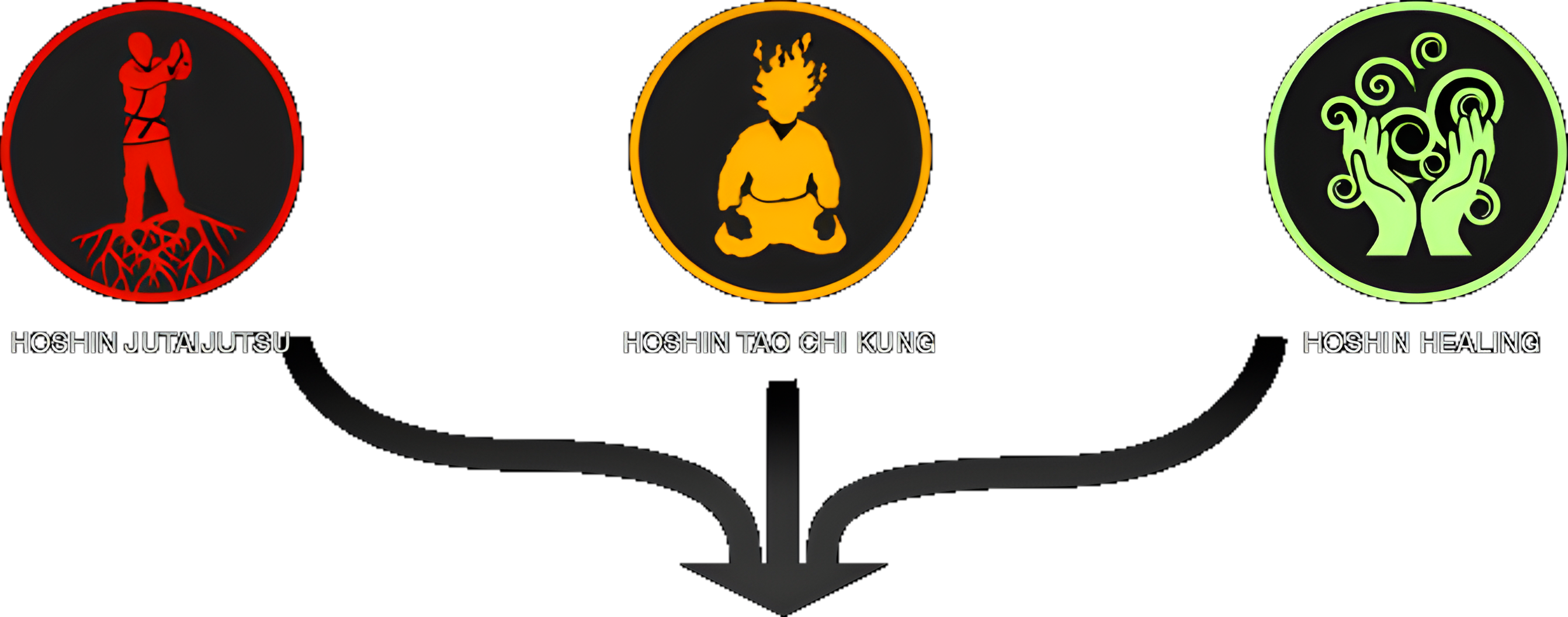
Welcome to Hoshin Budo
Discover the path to self-mastery through the traditions of Hoshin.
Honor. Courage. Respect.

Discover the path to self-mastery through the traditions of Hoshin.
Honor. Courage. Respect.
Hoshin Budo's ranking system is more than just a progression of techniques—it's a carefully crafted journey of personal transformation. Each belt represents mastery of specific physical skills while developing corresponding mental and energetic abilities.
Our system harmonizes the most effective principles from diverse martial traditions, creating a comprehensive approach to self-defense and personal growth. Through the Godai (Five Elements) model, students develop not just combat skills, but also healing abilities and profound self-understanding.
The foundation of our training methodology is built upon the classical Japanese five elements—Earth, Water, Fire, Wind, and Void. Each element represents not just physical techniques, but a complete approach to movement, strategy, and personal development.
The foundation of all movement, Earth teaches stability, power, and unshakeable presence.
Embodying fluidity and adaptability, Water teaches circular motion and emotional balance.
The element of transformation and intensity, Fire develops explosive power and decisive action.
Representing freedom and spontaneity, Wind cultivates speed, evasion, and unpredictability.
The ultimate state of mastery, Void transcends form to achieve effortless effectiveness.
Start your transformation through the elements of Hoshin Budo.

Each rank in Hoshin Budo represents not just technical proficiency, but a deeper understanding of movement principles, energy work, and personal development. Our belt system follows the Godai elements, creating a natural progression of skill and awareness.

The beginning of the journey. White represents purity of intention and openness to learning. Students focus on basic stances, fundamental movements, and developing a strong foundation in martial awareness.

Representing the Earth element (Chi), this rank develops strong foundations, stability, and grounding. Students learn to root themselves effectively and generate power from their connection to the ground.

In Water Belt training, adaptability and fluid motion come to the forefront. Practitioners refine circular footwork, seamlessly redirecting attacks while maintaining a calm mind. Breath control techniques further reduce stress, channeling adrenaline into heightened focus.

Fire Belt cultivates decisive engagement and precise aggression. Movement is explosive yet controlled, focusing on direct strikes and overwhelming the opponent's defenses. Emphasis on rapid breath cycles aids in managing the high-intensity nature of these techniques.

Speed, evasion, and refined strategy define Wind Belt practice. Students hone agile movements, subtle control, and advanced footwork, integrating all previous elements into cohesive tactics. Healing insights begin to merge with combative skills for a well-rounded perspective.

The Brown Belt signifies an instructor-in-training who not only demonstrates Hoshin's core strategies and techniques, but also the ability to teach them effectively. Brown Belts may lead training groups and begin developing teaching skills.

Shodan (first-degree Black Belt) represents mastery of the foundational elements and opening of the Microcosmic Orbit. Practitioners demonstrate complete integration of the Godai elements and begin exploring advanced energy work and teaching methodologies.

Ranks from Nidan (2nd degree) to Yondan (4th degree) further refine the integration of Hoshin principles, encouraging minimal waste in movement. Techniques may appear deceptively simple—yet they reflect a profound mastery of energy, timing, and mental focus.

Upon reaching Godan, a practitioner is recognized as Shihan (master-level instructor of Hoshin). An inverted patch denotes this status, with red stripes representing 6th–10th degree black belts. These elite ranks signify continued pursuit of mastery, refining every aspect of Hoshin Budo.
Transform Your Life Through Ancient Wisdom and Modern Training